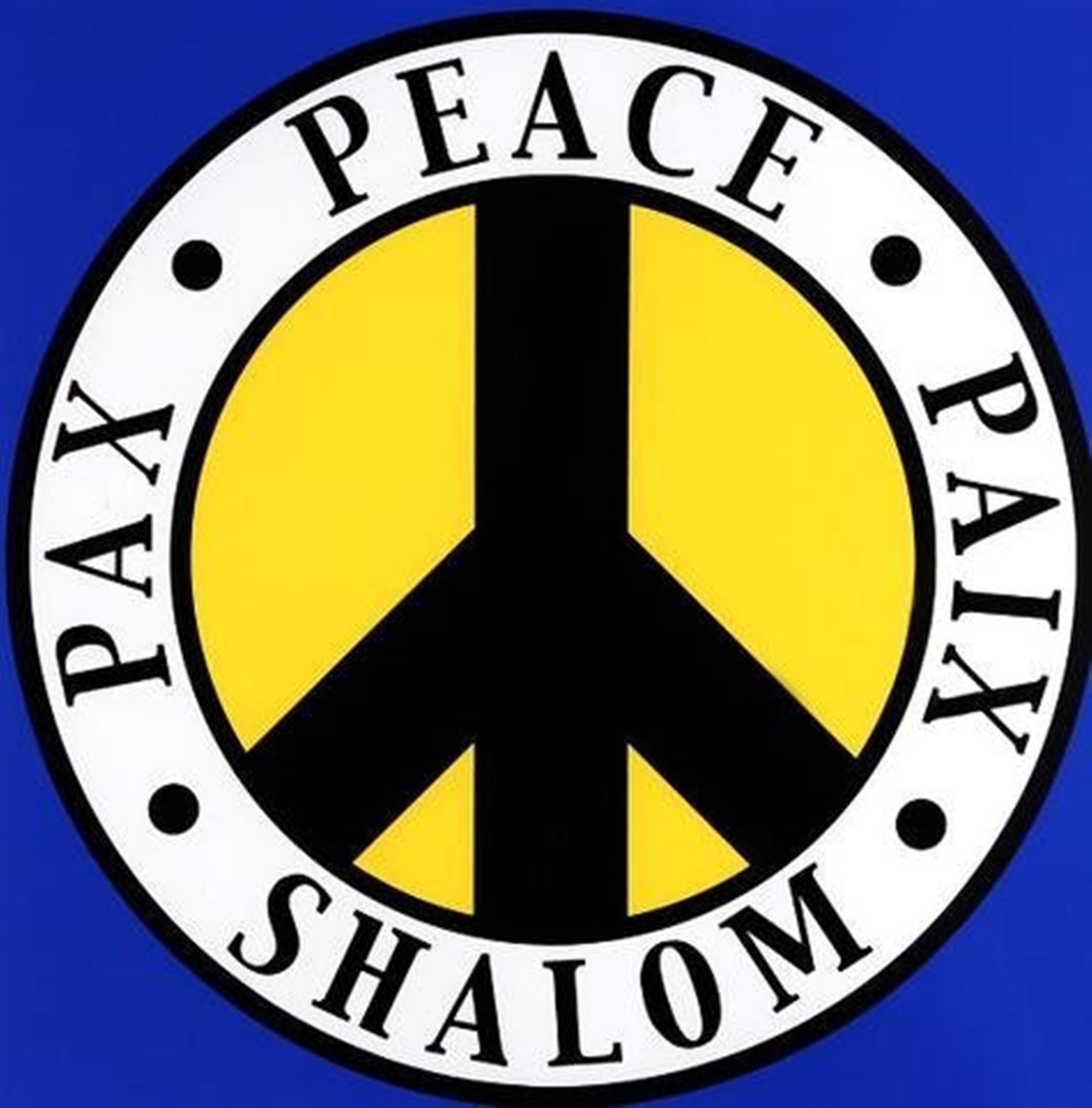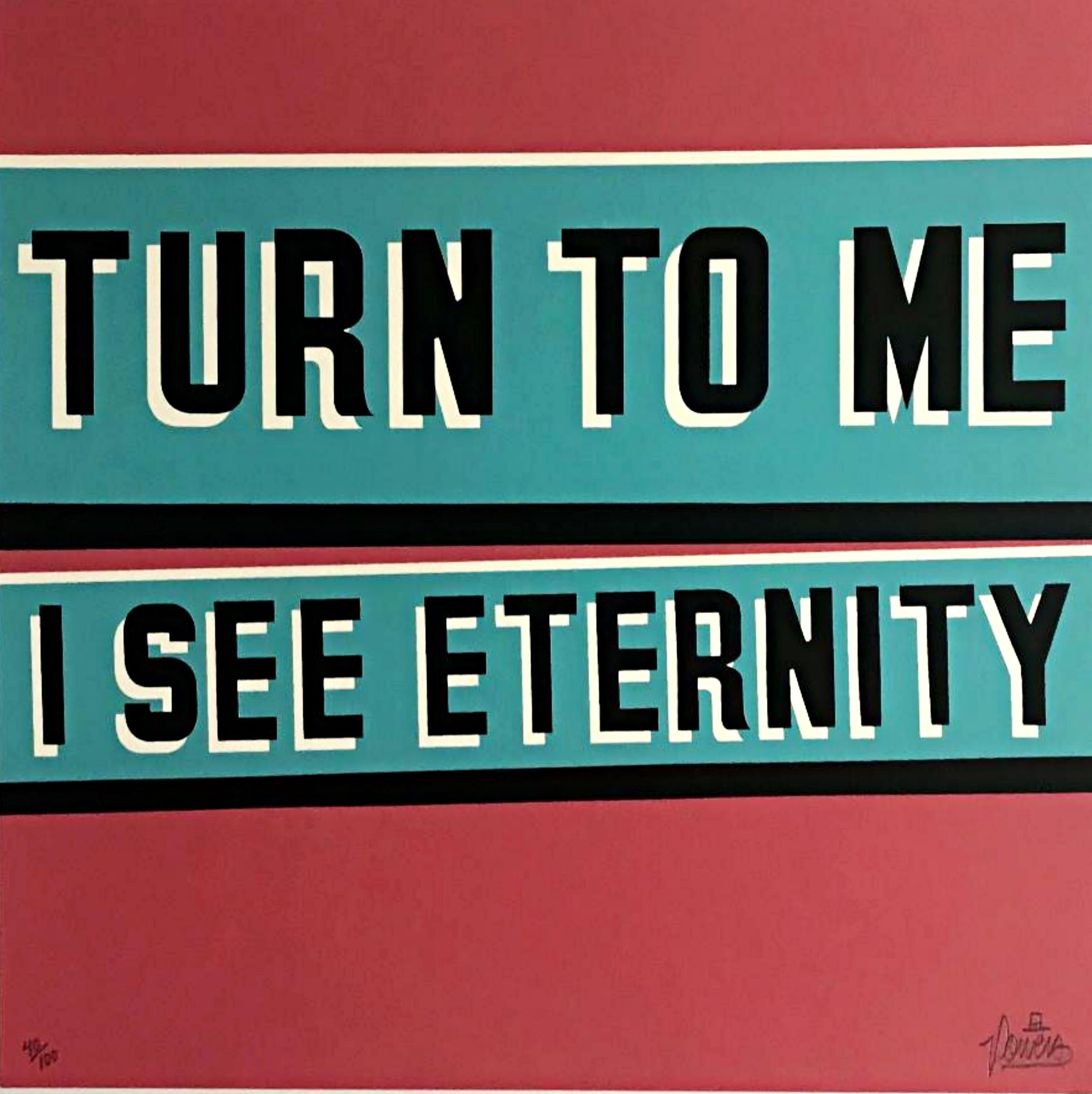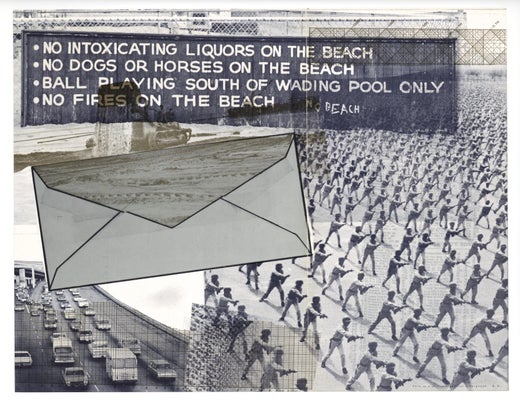Robert RauschenbergDemocratic Party Human Rights Dinner (signed Pop Art print edition of only 100)1981
1981
About the Item
- Creator:Robert Rauschenberg (1925 - 2008, American)
- Creation Year:1981
- Dimensions:Height: 30.4 in (77.22 cm)Width: 23 in (58.42 cm)
- Medium:
- Movement & Style:
- Period:
- Condition:
- Gallery Location:New York, NY
- Reference Number:1stDibs: LU174529775962
Robert Rauschenberg
Robert Rauschenberg was one of the preeminent American artists of the 20th century, occupying a singular position that straddled the Abstract Expressionist and Pop art movements, drawing on key elements of each. An artistic polymath equally adept at painting, collage and silkscreening, Rauschenberg is best known for for the complex assemblages of found objects he termed “combines.”
Rauschenberg was born in Port Arthur, Texas, in 1925. He first began to seriously consider a career in art in 1947, while serving in the U.S. Marines. After leaving the service, he briefly studied art in Paris with support from the G.I. Bill, then moved to North Carolina to attend Black Mountain College, home to a flourishing cross-disciplinary art community. Among his peers there were choreographer Merce Cunningham and composer John Cage, both of whom became friends and artistic collaborators.
Relocating to New York in the mid-1950s, Rauschenberg was initially put off by what he perceived as the self-seriousness of the adherents of Abstract Expressionism, then the dominant movement in the New York art world. Like Andy Warhol and Roy Lichtenstein, Rauschenberg was drawn to the visual landscape of popular culture and mined its imagery for inspiration. He used unorthodox materials like house paint and tried novel techniques in his studio like running paper over with a car whose wheels he had inked. Shortly after his inaugural solo exhibition at Leo Castelli Gallery, which featured paintings and drawings, he pivoted to a new format, creating his first found-object combines, which became his signature. The most famous of these is the 1959 Monogram in which a taxidermied goat is surrounded by a car tire, recalling the way a person’s initials are interwoven in the design referred to by the title.
Later in the 1960s, Rauschenberg turned his attention to silkscreening, creating prints that feature iconic figures of the day, very much in line with the style and content of Pop art. One such work, 1965's Core, which was created to commemorate the Congress of Racial Equality, combines photographs of President Kennedy, an unidentified Native American man, and a statue of a Civil War soldier with images of highways, amusement parks, street signs, and other features of the built environment. A circular color-test wheel sits at the composition’s formal core, reflecting the work’s commentary on race and ethnicity.
Throughout the 1960s and ‘70s, Rauschenberg experimented with printing on unusual materials, such as Plexiglas, clothing and aluminum. Venturing even further afield, he created performance works, such as his 1963 choreographed piece “Pelican” and the 1966 film Open Score. In 1998, the Guggenheim Museum presented a large and comprehensive retrospective of Rauschenberg’s work, highlighting his influence on American art in the second half of the 20th century.
Find original Robert Rauschenberg art for sale on 1stDibs.
- ShippingRetrieving quote...Ships From: New York, NY
- Return PolicyA return for this item may be initiated within 1 day of delivery.
- New York City Center mid 1960s geometric design Deluxe hand signed and numberedBy Robert IndianaLocated in New York, NYRobert Indiana New York City Center of Music and Drama (Hand signed limited edition), 1968 Color Silkscreen 35 × 25 inches Edition 23/144 Hand signed and dated lower right recto; num...Category
1960s Pop Art Abstract Prints
MaterialsScreen, Pencil
- Shalom Pax Paix (The Peace Print) silkscreen on Rives BFK paper signed/N 35/50By Robert IndianaLocated in New York, NYRobert Indiana Pax, Paix, Shalom (The Peace Print), 2004 Silkscreen in 4 colors on rives BFK paper Hand signed, dated, titled and numbered 35/50 in pencil by Robert Indiana on the f...Category
Early 2000s Pop Art Figurative Prints
MaterialsPencil, Screen
- Aufbruch Aus Moskau MockBa: Suite of 20 signed prints top Russian artists 64/100Located in New York, NYVARIOUS ARTISTS AUFBRUCH AUS MOSKAU MOCKBA - PORTFOLIO OF TWENTY (20) ORIGINAL LIMITED EDITION SIGNED GRAPHICS, 1990 20 Limited edition, hand signed and numbered Screenprints, unfram...Category
1990s Pop Art Abstract Prints
MaterialsMixed Media, Screen, Linen, Pencil
- Santa Fe Opera (Deluxe VIP Edition; Hand Signed & Numbered AP Edition of 50)By Robert IndianaLocated in New York, NYROBERT INDIANA Santa Fe Opera (Hand signed, numbered), 1976 Silkscreen on wove paper 37 1/2 × 27 inches Edition AP 7/50 Hand Signed and dated lower rig...Category
1970s Pop Art Abstract Prints
MaterialsScreen, Pencil
- Turn to Me I See Eternity - popular limited edition Valentine's day printLocated in New York, NYStephen Powers Turn to Me I See Eternity, 2016 Three color screenprint on 235g Coventry Rag Pencil with artist's trademark hat logo and numbered from the edition of 100 12 × 12 inche...Category
2010s Pop Art Abstract Prints
MaterialsScreen, Pencil
- Stable Gallery 16 October 1962 hand signed & inscribed by Robert Indiana - RAREBy Robert IndianaLocated in New York, NYRobert Indiana Stable Gallery 16 October 1962 (Hand Signed & Inscribed) Silkscreen on art paper Signed and Dedicated in pencil on the recto. The dedication and signature reads "For...Category
1960s Pop Art Abstract Prints
MaterialsPencil, Screen
- Shepard Fairey Screen-prints: collection of 60 works (2009-2022)By Shepard FaireyLocated in NEW YORK, NYShepard Fairey Screen-prints: collection of 60 works: 2009-2022: A rare assemblage of 60 hand-signed Shepard Fairey screen-prints; collected over a near 15 year period (2009-2022). Notable imagery includes: Bob Marley, Keith Haring, Ruth Bader Ginsburg, Kurt Cobain, as well as a series of vivid anti-war pieces defining the artist's practice (title list found further below). Each very well-preserved. Medium: Screen-prints on heavy paper. 2009-2022 (see below for a list of titles & years). Dimensions ranging from: 19.5 x 16 inches to 24x36 inches. Each work is hand-signed; works are either numbered from their respective main editions or notated 'AP' (see last listing image); a few or several works are signed, but not numbered. Excellent overall condition with the exception of perhaps some minor signs of handling on a few examples. Provenance: Private collection New York via Shepard Fairey. Listing images beginning with image 2 represent the actual works. These works will be shipped flat using protective materials. Please feel free to contact us with any additional questions. Titles & Years: OCEAN TODAY...Category
21st Century and Contemporary Pop Art Abstract Prints
MaterialsLithograph, Screen
- Judy Rifka Abstract Expressionist Contemporary Lithograph Hebrew 10 CommandmentBy Judy RifkaLocated in Surfside, FLJudy Rifka (American, b. 1945) 44/84 Lithograph on paper titled "Thou Shalt Not Bear False Witness against Thy Neighbor"; Depicting an abstract composition in blue, green, red and black tones with Hebrew script. Judaica interest. (I have seen this print described as a screenprint and as a lithograph) Hand signed in pencil and dated alongside an embossed pictorial blindstamp of a closed hand with one raised index finger. Solo Press. From The Ten Commandments Kenny Scharf; Joseph Nechvatal; Gretchen Bender; April Gornik; Robert Kushner; Nancy Spero; Vito Acconci; Jane Dickson; Judy Rifka; Richard Bosman and Lisa Liebmann. Judy Rifka (born 1945) is an American woman artist active since the 1970s as a painter and video artist. She works heavily in New York City's Tribeca and Lower East Side and has associated with movements coming out of the area in the 1970s and 1980s such as Colab and the East Village, Manhattan art scene. A video artist, book artist and abstract painter, Rifka is a multi-faceted artist who has worked in a variety of media in addition to her painting and printmaking. She was born in 1945 in New York City and studied art at Hunter College, the New York Studio School and the Skowhegan School of Painting and Sculpture in Maine. Rifka took part in the 1980 Times Square Show, (Organized by Collaborative Projects, Inc. in 1980 at what was once a massage parlor, with now-famous participants such as Jenny Holzer, Nan Goldin, Keith Haring, Kenny Scharf, Jean-Michel Basquiat, and Kiki Smith, the roster of the exhibition reads like a who’s who of the art world), two Whitney Museum Biennials (1975, 1983), Documenta 7, Just Another Asshole (1981), curated by Carlo McCormick and received the cover of Art in America in 1984 for her series, "Architecture," which employed the three-dimensional stretchers that she adopted in exhibitions dating to 1982; in a 1985 review in the New York Times, Vivien Raynor noted Rifka's shift to large paintings of the female nude, which also employed the three-dimensional stretchers. In a 1985 episode of Miami Vice, Bianca Jagger played a character attacked in front of Rifka's three-dimensional nude still-life, "Bacchanaal", which was on display at the Museum of Art Fort Lauderdale. Rene Ricard wrote about Rifka in his influential December 1987 Art Forum article about the iconic identity of artists from Van Gogh to Jean-Michel Basquiat and Keith Haring, The Radiant Child.The untitled acrylic painting on plywood, in the collection of the Honolulu Museum of Art, demonstrates the artist's use of plywood as a substrate for painting. Artist and writer Mark Bloch called her work "imaginative surfaces that support experimental laboratories for interferences in sensuous pigment." According to artist and curator Greg de la Haba, Judy Rifka's irregular polygons on plywood "are among the most important paintings of the decade". In 2013, Rifka's daily posts on Facebook garnered a large social media audience for her imaginative "selfies," erudite friendly comments, and widely attended solo and group exhibitions, Judy Rifka's pop art figuration is noted for its nervous line and frenetic pace. In the January 1998 issue of Art in America, Vincent Carducci echoed Masheck, “Rifka reworks the neo-classical and the pop, setting all sources in quotation for today’s art-world cognoscenti.” Rifka, along with artists like David Wojnarowicz, helped to take Pop sensibility into a milieu that incorporated politics and high art into Postmodernism; Robert Pincus-Witten stated in his 1988 essay, Corinthian Crackerjacks & Passing Go that "Rifka’s commitment to process and discovery, doctrine with Abstract Expressionist practice, is of paramount concern though there is nothing dogmatic or pious about Rifka’s use of method. Playful rapidity and delight in discovery is everywhere evident in her painting." In 2016, a large retrospective of Rifka's art was shown at the Jean-Paul Najar Foundation in Dubai. In 2017, Gregory de la Haba presented a Rifka retrospective at the Amstel Gallery in The Yard, a section of Manhattan described as "a labyrinth of small cubicles, conference rooms and small office spaces that are rented out to young entrepreneurs, professionals and hipsters". In 2019 her video Bubble Dancers New Space Ritual was selected for the International Istanbul Bienali. Alexandra Goldman Talks To Judy Rifka About Ionic Ironic: Mythos from the '80s at CORE:Club and the Inexistence of "Feminist Art" Whitehot Magazine of Contemporary Art. She was included in "50 Contemporary Women Artists", a book comprising a refined selection of current and impactful artists. The foreword is by Elizabeth Sackler of the Brooklyn Museum’s Sackler Center for Feminist Art. Additional names in the book include sculptor and carver Barbara Segal...Category
1980s Pop Art Abstract Prints
MaterialsLithograph, Screen
- Study of HandsBy Roy LichtensteinLocated in New York, NYCreated in 1981 as an original lithograph with screen-printing, Roy Lichtenstein’s, Study of Hands is hand-signed in pencil, dated and numbered, measuring 31 ¼ x 32 ¾ in. (79.5 x 83....Category
20th Century Pop Art Figurative Prints
MaterialsLithograph, Screen
- Joe Tilson British Pop Art Screenprint, Color Lithograph 4 Seasons 4 ElementsBy Joe TilsonLocated in Surfside, FLSilkscreen screenprint or Lithograph Hand signed and numbered. An esoteric, mystical, Kabbala inspired print with Hebrew as well as other languages. Joseph Charles Tilson RA (born 2...Category
1970s Pop Art Abstract Prints
MaterialsLithograph, Screen
- SpeedskaterBy Andy WarholLocated in Ljubljana, SIOriginal silkscreen printed in colors, 1983. Edition of 150 signed and numbered impressions on Arches 88 paper. Art and Sport portfolio: The Yugoslav Olympic Committee of the Winter ...Category
1980s Pop Art Figurative Prints
MaterialsScreen
- What Party (Orange), KAWSBy KAWSLocated in Fairfield, CTArtist: KAWS (1974) Title: What Party (Orange) Year: 2020 Medium: Silkscreen on Saunders Waterford paper Size: 22 x 22 inches Edition: 100, plus 20 proofs Condition: Excellent Inscri...Category
2010s Pop Art Abstract Prints
MaterialsScreen






